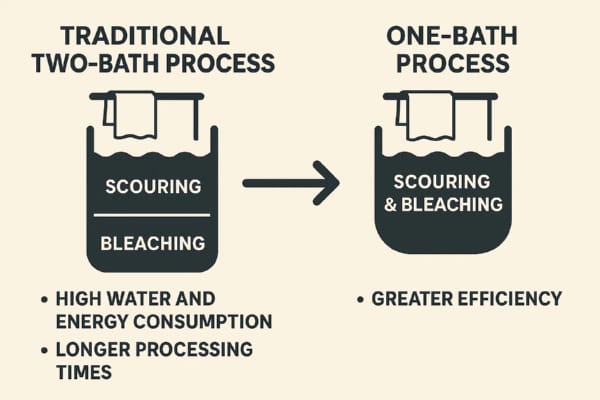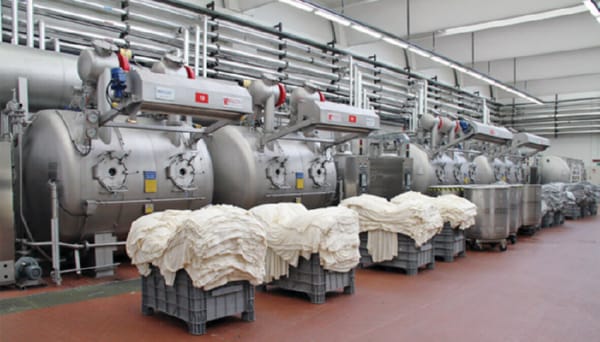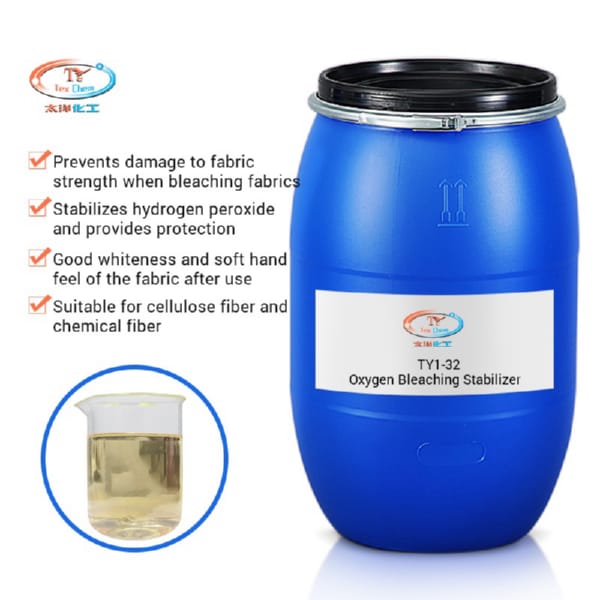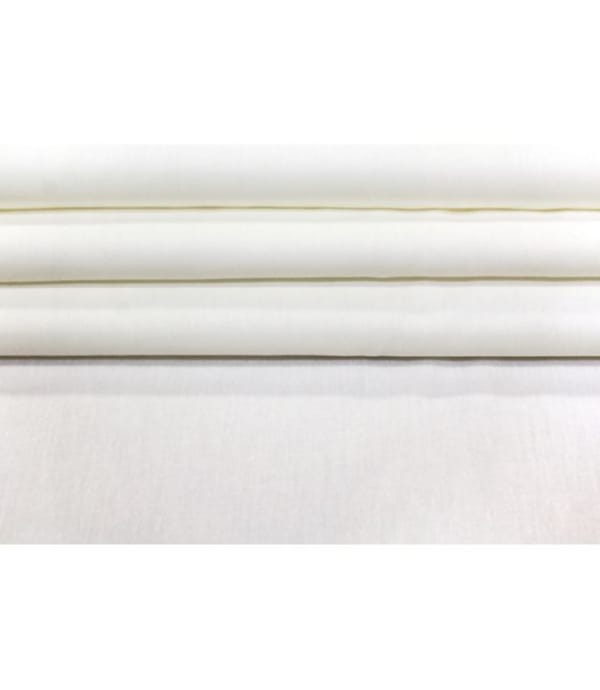

In the competitive textile industry, efficiency is everything. For cotton processors, textile pretreatment is a critical but often time-consuming and resource-intensive stage. Traditionally, scouring and bleaching are performed in two separate, long baths. But what if you could combine them into a single, efficient step? This guide explores the powerful process of one-bath scouring and bleaching, a modern solution that can dramatically cut time and costs in your production line. Discover how innovative textile auxiliaries are making this energy-saving process a reality for mills worldwide. Optimize your pretreatment process today with our advanced solutions.

Why is the traditional two-step process for cotton pretreatment inefficient? To appreciate the innovation of the one-bath method, it's essential to understand the limitations of the conventional approach.
The two-step process requires two separate baths, meaning double the water, double the heating, and double the rinsing. This high water consumption and energy consumption not only drives up utility costs but also places a heavy burden on the environment.
Running two separate cycles naturally leads to longer processing times. Each bath, with its heating, holding, draining, and rinsing phases, adds hours to the production schedule. This slows down the entire line, resulting in lower throughput and reduced overall factory capacity.
The chemical reason for the two-step process is the incompatibility of the environments. Scouring is performed in a highly alkaline medium to remove waxes and impurities, while hydrogen peroxide bleaching is most stable and effective under slightly different conditions. Managing these two distinct chemical systems has traditionally necessitated two separate baths.
The one-bath scouring and bleaching process, as the name suggests, combines these two steps into a single, streamlined operation. How does combined pretreatment work? The magic lies in creating a stable chemical environment where both processes can occur simultaneously and effectively.

This is achieved by using a carefully balanced process formula of detergents, alkali, and a specialized stabilizer. This system is robust enough to handle the alkaline conditions required for scouring while simultaneously controlling the decomposition of hydrogen peroxide for effective bleaching.
The absolute key to a successful one-bath process is the oxygen bleaching stabilizer. A conventional stabilizer would break down in the highly alkaline environment required for effective scouring. A high-performance stabilizer, however, is designed to withstand these harsh conditions, ensuring the hydrogen peroxide releases its oxygen in a controlled manner for uniform whiteness.
At Taiyang Chemical, we've engineered TY1-32 to be the cornerstone of a successful one-bath process. This is not just any oxygen bleaching stabilizer; it is a non-silicone formulation specifically designed for high-efficiency cotton pretreatment.

What is the advantage of a non-silicone stabilizer? Silicone-based stabilizers are notorious for causing problems later in production. They can build up on equipment and create "silicone spots" on the fabric, which resist dye and lead to defects. Our non-silicone TY1-32 completely eliminates this risk, ensuring a clean process and trouble-free dyeing.
The standout feature of TY1-32 is its exceptional alkali resistance. This allows it to perform flawlessly in the single, highly alkaline bath where both scouring and bleaching occur, preventing premature peroxide decomposition and ensuring consistent results batch after batch.
While its primary role is stabilization, TY1-32 also contributes to the final quality. Fabrics treated with our one-bath process using this stabilizer exhibit excellent whiteness and a surprisingly soft hand feel, often superior to those from a traditional two-step process.

Transitioning to a one-bath process is a straightforward way to achieve significant cost savings. Here is a practical guide based on our proven process formula.
A typical formula for a one-bath process for cotton knits would be:
The process is typically run at 95°C for 60 minutes with a liquor ratio of 1:10–15. This single 60-minute cycle replaces two much longer cycles, dramatically increasing your machine's productivity.
Start with lab trials to optimize the formula for your specific fabric and water conditions. Our technical team can provide support during this transition to ensure it is seamless and effective. With the right guidance, the switch is simple.
In the quest for efficiency, the one-bath scouring and bleaching process stands out as a smart and powerful upgrade for any cotton pretreatment line. It's an energy-saving solution that reduces water consumption, shortens processing times, and increases throughput. The key to unlocking these benefits is a high-performance, non-silicone oxygen bleaching stabilizer like TY1-32.
Stop wasting time, water, and energy on outdated pretreatment methods. Learn more about the TY1-32 Oxygen Bleaching Stabilizer and request a process audit from our technical team.
Does the one-bath process achieve the same level of whiteness as the traditional two-step method? Yes. When using a high-quality stabilizer like TY1-32, the controlled release of oxygen ensures that the final whiteness is excellent and fully comparable, if not superior, to that achieved through a conventional two-step process.
Can this process be used for all types of cotton fabrics, including heavy wovens? The one-bath process is highly effective for cotton and cotton-blend knits. While it can be adapted for woven fabrics, the specific process formula and parameters may need to be adjusted. We recommend consulting with our technical experts to optimize the process for your specific fabric type.
What is the main advantage of a non-silicone stabilizer like TY1-32? The primary advantage of a non-silicone stabilizer is that it prevents the formation of silicone deposits on machinery and fabric. This eliminates the risk of silicone spots, which cause major problems like uneven dyeing and printing, ensuring a cleaner and more reliable production process.
How much can my factory realistically save by switching to a one-bath process? How much can my factory save? While the exact amount varies, factories typically report significant cost savings. By eliminating an entire process bath, you can expect to save up to 40-50% in water, energy, and time for the pretreatment stage, leading to a substantial increase in overall productivity and a rapid return on investment. To get a customized savings estimate, contact us today.
